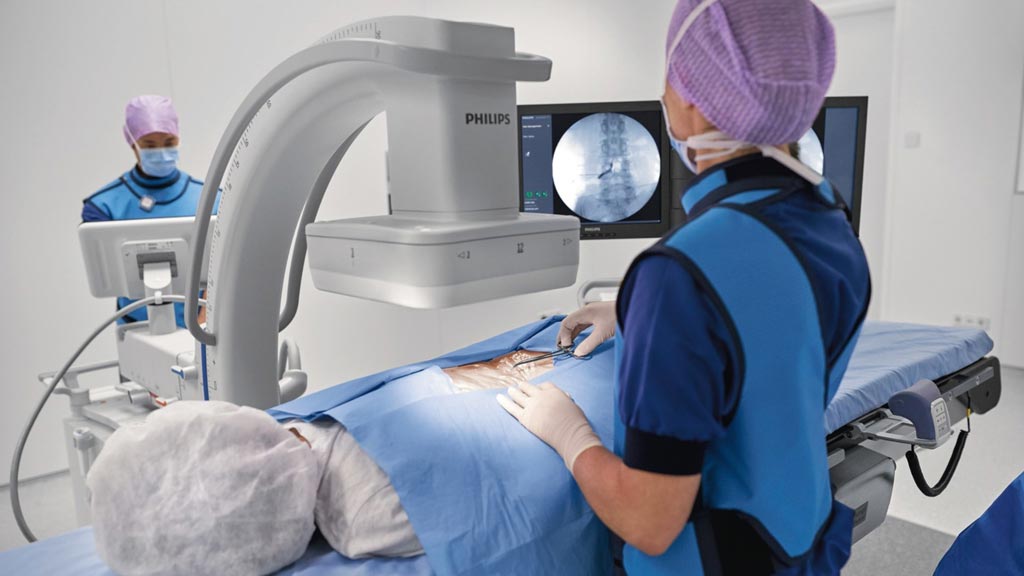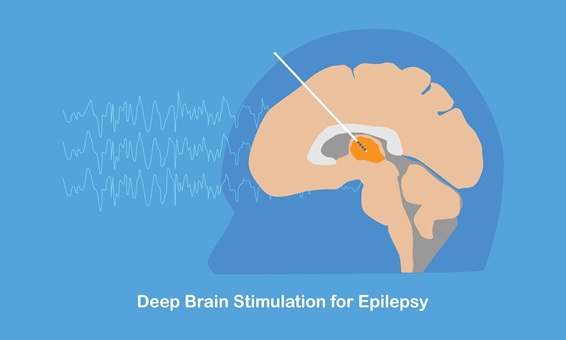Mobile C-arm Platform Enhances OR Performance
|
By HospiMedica International staff writers Posted on 26 Feb 2019 |

Image: The Zenition platform brings together innovations in image capture and processing (Photo courtesy of Philips Healthcare).
A novel mobile C-arm imaging platform provides live image guidance during a wide range of surgeries including orthopedic, trauma, and vascular procedures.
The Philips (Amsterdam, The Netherlands) Zenition mobile C-arm platform is designed to merge innovations in image capture and processing, ease-of-use, and versatility, allowing hospitals to maximize operating room (OR) performance and enhance clinical capabilities. Features include compact design, positioning memory, and BodySmart software, which captures fast, consistent images even at the edge of the image intensifier/flat panel detector (FPD), reducing the need for C-arm repositioning by 45%. Zenition mobile C-arms are also easy to move between ORs, simple to position around the patient, and intuitive to operate.
The Zenition C-arm system incorporates the same image processing algorithms used in the company's Azurion platform, offering high-definition visualization of patient anatomies, a greater viewing area, and crisp imaging thanks to Philips' MetalSmart software, which automatically adjusts the contrast and brightness of images to improve quality when metal objects, such as implants, are present in the field of view. Finally, a tablet-like user interface and simple unified workflow makes the system easy to operate, turning point-and-shoot image capture fast and intuitive during any interventional or surgical procedure.
“As patient numbers rise and procedures become more complex, equipment up-time, utilization, and usability become ever more important,” said Ronald Tabaksblat, business leader for image guided therapy systems at Philips. “Our new harmonized Zenition mobile C-arm platform offers the proven performance and ease of use needed for surgical teams to work with confidence and precision, now and in the future.”
“The Philips Zenition is a user-friendly system that's intuitive to use for both surgeons and nursing staff,” said cardiac surgeon Nikolaos Bonaros, MD, of the Medical University of Innsbruck. “Its simplified workflow means that we can convert a room from a conventional OR to a high-quality interventional room more quickly. At the same time the system provides high image quality at the level required for hybrid OR procedures.”
Mobile C-arm X-ray systems are used for a variety of diagnostic imaging and minimally invasive surgical procedures. Examples include visualizing kidney drainage, abdominal and thoracic aortic aneurysm repair, percutaneous valve replacements, cardiac and vascular surgery, gastroenterology, orthopedics, and pain management and neurology procedures.
The Philips (Amsterdam, The Netherlands) Zenition mobile C-arm platform is designed to merge innovations in image capture and processing, ease-of-use, and versatility, allowing hospitals to maximize operating room (OR) performance and enhance clinical capabilities. Features include compact design, positioning memory, and BodySmart software, which captures fast, consistent images even at the edge of the image intensifier/flat panel detector (FPD), reducing the need for C-arm repositioning by 45%. Zenition mobile C-arms are also easy to move between ORs, simple to position around the patient, and intuitive to operate.
The Zenition C-arm system incorporates the same image processing algorithms used in the company's Azurion platform, offering high-definition visualization of patient anatomies, a greater viewing area, and crisp imaging thanks to Philips' MetalSmart software, which automatically adjusts the contrast and brightness of images to improve quality when metal objects, such as implants, are present in the field of view. Finally, a tablet-like user interface and simple unified workflow makes the system easy to operate, turning point-and-shoot image capture fast and intuitive during any interventional or surgical procedure.
“As patient numbers rise and procedures become more complex, equipment up-time, utilization, and usability become ever more important,” said Ronald Tabaksblat, business leader for image guided therapy systems at Philips. “Our new harmonized Zenition mobile C-arm platform offers the proven performance and ease of use needed for surgical teams to work with confidence and precision, now and in the future.”
“The Philips Zenition is a user-friendly system that's intuitive to use for both surgeons and nursing staff,” said cardiac surgeon Nikolaos Bonaros, MD, of the Medical University of Innsbruck. “Its simplified workflow means that we can convert a room from a conventional OR to a high-quality interventional room more quickly. At the same time the system provides high image quality at the level required for hybrid OR procedures.”
Mobile C-arm X-ray systems are used for a variety of diagnostic imaging and minimally invasive surgical procedures. Examples include visualizing kidney drainage, abdominal and thoracic aortic aneurysm repair, percutaneous valve replacements, cardiac and vascular surgery, gastroenterology, orthopedics, and pain management and neurology procedures.
Latest Surgical Techniques News
- Minimally Invasive Endoscopic Surgery Improves Severe Stroke Outcomes
- Novel Glue Prevents Complications After Breast Cancer Surgery
- Breakthrough Brain Implant Enables Safer and More Precise Drug Delivery
- Bioadhesive Sponge Stops Uncontrolled Internal Bleeding During Surgery
- Revolutionary Nano Bone Material to Accelerate Surgery and Healing
- Superior Orthopedic Implants Combat Infections and Quicken Healing After Surgery
- Laser-Based Technique Eliminates Pancreatic Tumors While Protecting Healthy Tissue
- Surgical Treatment of Severe Carotid Artery Stenosis Benefits Blood-Brain Barrier
- Revolutionary Reusable Duodenoscope Introduces 68-Minute Sterilization
- World's First Transcatheter Smart Implant Monitors and Treats Congestion in Heart Failure
- Hybrid Endoscope Marks Breakthrough in Surgical Visualization
- Robot-Assisted Bronchoscope Diagnoses Tiniest and Hardest to Reach Lung Tumors
- Diamond-Titanium Device Paves Way for Smart Implants that Warn of Disease Progression
- 3D Printable Bio-Active Glass Could Serve as Bone Replacement Material
- Spider-Inspired Magnetic Soft Robots to Perform Minimally Invasive GI Tract Procedures
- Micro Imaging Device Paired with Endoscope Spots Cancers at Earlier Stage
Channels
Critical Care
view channel
Smartphone Imaging System Enables Early Oral Cancer Detection
Oral cancer is often diagnosed at an advanced stage, reducing survival rates despite the mouth’s easy accessibility for visual exams. Many dentists and hygienists can identify abnormal lesions but lack... Read more
Swallowable Pill-Sized Bioprinter Treats GI Tract Injuries
Soft tissue injuries in the gastrointestinal tract, such as ulcers and hemorrhages, are typically treated through invasive surgical procedures that carry high risks and do not always result in permanent repair.... Read moreSurgical Techniques
view channel
Minimally Invasive Endoscopic Surgery Improves Severe Stroke Outcomes
Intracerebral hemorrhage, a type of stroke caused by bleeding deep within the brain, remains one of the most challenging neurological emergencies to treat. Accounting for about 15% of all strokes, it carries... Read more
Novel Glue Prevents Complications After Breast Cancer Surgery
Seroma and prolonged lymphorrhea are among the most common complications following axillary lymphadenectomy in breast cancer patients. These postoperative issues can delay recovery and postpone the start... Read morePatient Care
view channel
Revolutionary Automatic IV-Line Flushing Device to Enhance Infusion Care
More than 80% of in-hospital patients receive intravenous (IV) therapy. Every dose of IV medicine delivered in a small volume (<250 mL) infusion bag should be followed by subsequent flushing to ensure... Read more
VR Training Tool Combats Contamination of Portable Medical Equipment
Healthcare-associated infections (HAIs) impact one in every 31 patients, cause nearly 100,000 deaths each year, and cost USD 28.4 billion in direct medical expenses. Notably, up to 75% of these infections... Read more
Portable Biosensor Platform to Reduce Hospital-Acquired Infections
Approximately 4 million patients in the European Union acquire healthcare-associated infections (HAIs) or nosocomial infections each year, with around 37,000 deaths directly resulting from these infections,... Read moreFirst-Of-Its-Kind Portable Germicidal Light Technology Disinfects High-Touch Clinical Surfaces in Seconds
Reducing healthcare-acquired infections (HAIs) remains a pressing issue within global healthcare systems. In the United States alone, 1.7 million patients contract HAIs annually, leading to approximately... Read moreHealth IT
view channel
Printable Molecule-Selective Nanoparticles Enable Mass Production of Wearable Biosensors
The future of medicine is likely to focus on the personalization of healthcare—understanding exactly what an individual requires and delivering the appropriate combination of nutrients, metabolites, and... Read moreBusiness
view channel
Philips and Masimo Partner to Advance Patient Monitoring Measurement Technologies
Royal Philips (Amsterdam, Netherlands) and Masimo (Irvine, California, USA) have renewed their multi-year strategic collaboration, combining Philips’ expertise in patient monitoring with Masimo’s noninvasive... Read more
B. Braun Acquires Digital Microsurgery Company True Digital Surgery
The high-end microsurgery market in neurosurgery, spine, and ENT is undergoing a significant transformation. Traditional analog microscopes are giving way to digital exoscopes, which provide improved visualization,... Read more
CMEF 2025 to Promote Holistic and High-Quality Development of Medical and Health Industry
The 92nd China International Medical Equipment Fair (CMEF 2025) Autumn Exhibition is scheduled to be held from September 26 to 29 at the China Import and Export Fair Complex (Canton Fair Complex) in Guangzhou.... Read more
















